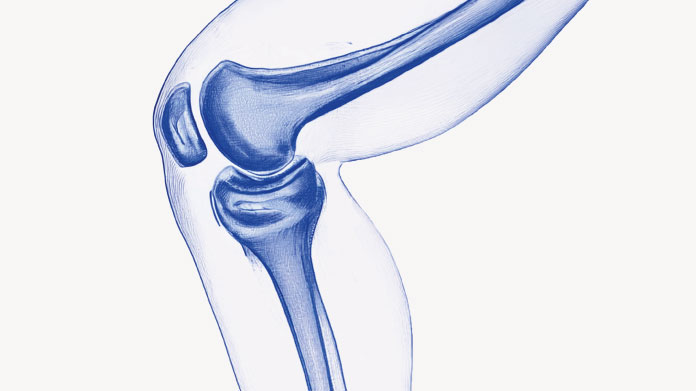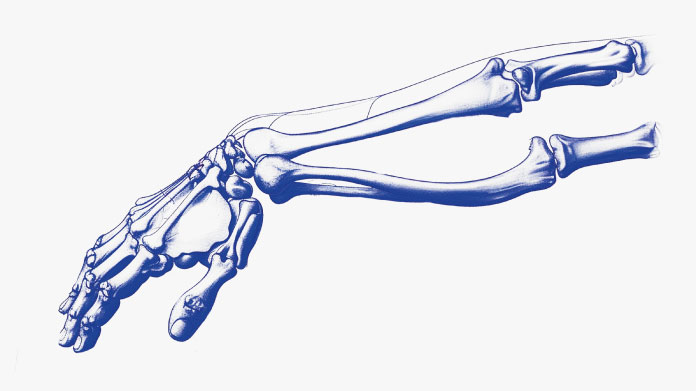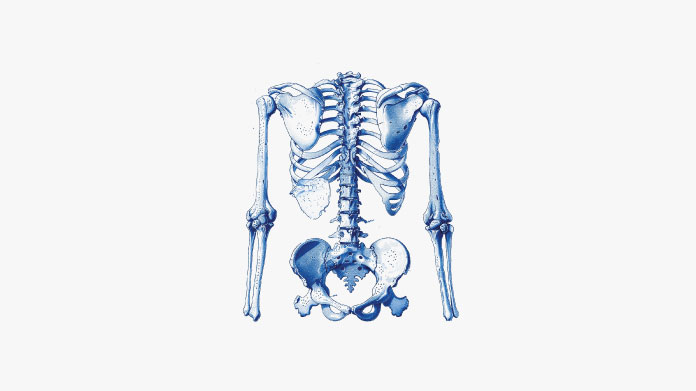Received wisdom on arthritis: separating fact from fiction!
Arthritis is a very common disease of the joints, but how much do you really know about it? Surveys suggest that our understanding is often inaccurate due to the many misconceptions circulating about this chronic condition.

Arthritis and osteoarthritis are the same thing
FALSE. In English-speaking countries, ‘arthritis’ is used as an umbrella term for all forms of the disease including the common form, osteoarthritis. In France, however, arthritis and osteoarthritis are viewed as two separate joint diseases, both of which cause rheumatic pain, but which differ in several ways. Arthritis is considered an inflammatory disease which is accompanied by secretion of substances that can change the structure of the joint. Osteoarthritis is regarded as a ‘mechanical’ disease, caused by ‘wear and tear’ changes to cartilage. As a result of these differences, it is believed that they do not always have the same symptoms: being inflammatory in origin, arthritis can be painful at any time – when resting or moving, while osteoarthritis primarily causes pain during movement which tends to subside when at rest.
Osteoarthritis can affect several joints
TRUE. Osteoarthritis can occur in various parts of the body, in some more than others. In 70-75% of cases, osteoarthritis is detected in the spinal column in both cervical and lumbar vertebrae. In 60% of cases, the fingers are also affected, but the condition can also develop in the knees, hips, shoulders, wrists, elbows and feet.
Osteoarthritis is always painful.
FALSE. Contrary to popular belief, you can have osteoarthritis without realising it. Indeed, this joint disease can manifest in different ways depending on the individual. It may develop very slowly over several years with little or no joint pain. Unfortunately, however, its onset can also be rapid, appearing in just a few years and causing severe pain and significant degeneration of the joints.
A flare-up of osteoarthritis can occur at any time.
TRUE. Though osteoarthritis may be less painful depending on the level of movement, severe pain can occur spontaneously. During these flare-ups, sufferers experience shooting pains, usually at night or in the morning, similar to those of arthritis. These painful episodes may last several days and are often indicative of a worsening of the disease.
Osteoarthritis is associated with advancing age
TRUE AND FALSE. With the passing years, our joint cartilage naturally suffers wear and tear, which is why osteoarthritis is such a common disease among older people. On average, 65% of people over 65 are affected, with this figure rising to 80% in the over-80s. However, arthritis is not exclusively a disease of old age. It can develop in young adults, particularly those who participate in intense sports activity.
Cracking your knuckles causes osteoarthritis.
FALSE. It is often thought that repeatedly cracking your knuckles raises the risk of developing osteoarthritis in the hands or fingers. A number of theories have been expounded to explain such effects. But this has now been shown to be untrue. A doctor in California who tested the theory by cracking the finger joints on his left hand every day, found no significant difference between his hands after 50 years. Reassuring news for those who regularly crack their knuckles!
Breaking a bone increases the risk of osteoarthritis.
TRUE. Unlike cracking the joints, a number of other factors have been shown to predispose to osteoarthritis. Among them are bone fractures and other traumatic injuries such as dislocations and sprains. The same is true for joint diseases such as rheumatoid arthritis. Repeated, severe pressure on the joints also promotes wear and tear of cartilage. Studies have also shown that excess weight is associated with a greater risk of developing osteoarthritis.
Those with osteoarthritis should not play sports.
TRUE AND FALSE. While it is true that exercise should be avoided during osteoarthritis flare-ups, activity should be resumed as soon as possible. Keeping the joints moving is essential in order to restrict cartilage degeneration. It is therefore vital for those with osteoarthritis to maintain regular physical exercise, focusing on moderate-intensity sports. Sensible options include walking, hiking, yoga, low-level gymnastics and swimming, the latter being a particularly good choice since the impact on joints from water-based activities is very low. Stretching can also help maintain good joint mobility.
It is possible to prevent osteoarthritis.
TRUE. It is not only possible but important to maintain the health of your joints, starting from a young age. This primarily means avoiding falls, fractures, and trauma … To reduce the risk of osteoarthritis, regular, moderate-intensity exercise is also recommended. What you eat has an effect on your joints too; a healthy, balanced diet is vital in order to avoid gaining weight or risking deficiency. It is particularly important to ensure an adequate intake of calcium and vitamin D as these nutrients play a key role in joint health. Specific dietary supplements can also help maintain healthy joints. These include Joint Support Formula which combines a number of compounds with benefits for joint health, including hyaluronic acid, chondroitin sulphate and silicon which contributes to cartilage formation.
Osteoarthritis is a life sentence.
FALSE. Osteoarthritis should not be considered a ‘life sentence’. Solutions exist that can improve daily life by effectively targeting joint pain. Scientific progress has made significant advances towards the development of an effective treatment for osteoarthritis. Several natural substances have been identified as having properties for treating this condition. Among them is methylsulfonylmethane (MSM) which has been studied extensively for its ability to combat the condition. Other plants have attracted scientific interest includingBoswellia serrata resin, which has been used for thousands of years in India as a remedy for osteoarthritis, and has demonstrated a number of benefits for relieving and fighting the disorder. The same is true of curcuma which offers significant therapeutic potential for treating osteoarthritis with plant-based remedies.
55 Days
Very happy with the order and the…
Very happy with the order and the prompt team's response to an identified issue with my order.
KUQI Fatmir
63 Days
15 + years as a customer
I have been using their products for over 15 years as I find both the quality and pricing excellent.
Del Chandler
64 Days
Good quick delivery
Good quick delivery
Timothy O Shea
65 Days
Good service
Good communication following order. Product came within the time frame and was well packaged. The only confusing thing I found was in checking out. For some reason it is not clear how to do so and the current system should be improved.
Joe O Leary
74 Days
Simple and fast.
Simple and fast.
Nina
75 Days
Great product was definitely what is…
Great product was definitely what is says and arrived on without issue
customer
81 Days
I love reading those product facts on…
I love reading those product facts on Supersmart.com. Effective health products making permanent changes to my blood-work results and testes. However, I also have to order capsules from other websites.
NORDGULEN Olav
84 Days
Great products
Great products Very easy to choose, to order… and to get at home
Federica mastrojanni
86 Days
Service rapide et bons produits
Service rapide et bons produits
customer
87 Days
Good products and fast delivery
Good products and fast delivery
Trusted
92 Days
Does what it says on the can
I believe in this product Made to highest standard The ordering process is straightforward Delivery time prompt Excellent product, excellent service Happy customer ❤️
Sheba Kelleher
97 Days
Excellents produits
Excellents produits. Rien à dire si ce n'est qu'ils sont très chèrs.
MJS_France
100 Days
Very good supplement
Very good supplement
Glaveash
101 Days
Supersmart supplements are really…effective
Supersmart supplements are really effective and have helped me and family members and friends to improve their health including some of us with severe health problems including some with no existing medical treatment.
Anne Georget
102 Days
SuperBig Supersmart
SuperBig Supersmart
Pierre



